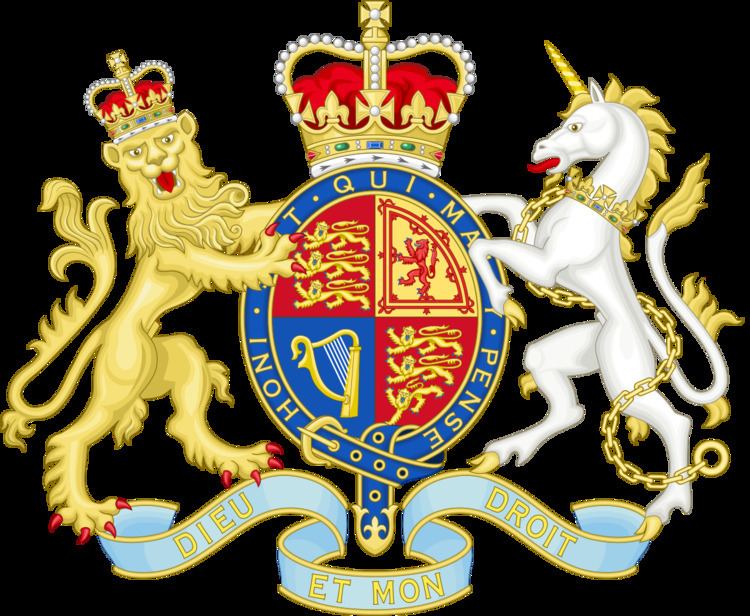Tony Blair, as Leader of the Labour Party, was Leader of the Opposition in the United Kingdom from his election as Leader on 21 July 1994 until he became Prime Minister on 2 May 1997. He announced his first Shadow Cabinet on 20 October 1994.
Initial Shadow Cabinet
On 20 October 1994, following the 1994 Shadow Cabinet elections, Blair announced his first Shadow Cabinet.
Tony Blair – Leader of Her Majesty's Most Loyal Opposition and Leader of the Labour PartyJohn Prescott – Deputy Leader of Her Majesty's Most Loyal Opposition and Deputy Leader of the Labour PartyLord Richard – Leader of the Opposition in the House of LordsDerek Foster – Labour Chief Whip in the House of CommonsLord Graham of Edmonton – Labour Chief Whip in the House of LordsLord Irvine of Lairg – Shadow Lord ChancellorGordon Brown – Shadow Chancellor of the ExchequerRobin Cook – Shadow Foreign SecretaryJack Straw – Shadow Home SecretaryDavid Clark – Shadow Secretary of State for DefenceDavid Blunkett – Shadow Secretary of State for EducationHarriet Harman – Shadow Secretary of State for EmploymentFrank Dobson – Shadow Secretary of State for the EnvironmentMargaret Beckett – Shadow Secretary of State for HealthAnn Taylor – Shadow Leader of the House of Commons and Shadow Minister for the Citizen's CharterDonald Dewar – Shadow Secretary of State for Social SecurityChris Smith – Shadow Secretary of State for National Heritage and Shadow Minister with special responsibility for the Information SuperhighwayJack Cunningham – Shadow Secretary of State for Trade and IndustryMichael Meacher – Shadow Secretary of State for TransportGeorge Robertson – Shadow Secretary of State for ScotlandRon Davies – Shadow Secretary of State for WalesMo Mowlam – Shadow Secretary of State for Northern IrelandJoan Lestor – Shadow Minister for Overseas DevelopmentGavin Strang – Shadow Minister of Agriculture, Fisheries and FoodBlair made a number of significant changes to the Shadow Cabinet on 19 October 1995, following the 1995 Shadow Cabinet elections. Foster, who had been elected to the post, acceded to Blair's request that he step aside as Chief Whip; he was appointed Shadow Chancellor of the Duchy of Lancaster and Shadow Minister responsible for the Citizen's Charter, taking the latter from Taylor, who remained Shadow Leader of the House. Dewar was appointed Chief Whip under a new rule that made the job appointive and added on additional elective seat in the Shadow Cabinet. Chris Smith replaced Dewar at Social Security, and was replaced as Shadow National Heritage Secretary by Cunningham. Responsibility for the Information Superhighway was transferred from Shadow National Heritage Secretary to a junior Shadow Trade and Industry minister (Geoff Hoon). Cunningham was in turn replaced at the Trade and Industry brief by Beckett. Harman took over the Health portfolio Beckett had held. Blunkett added Harman's Employment portfolio to his own to reflect the created of the Department for Education and Employment.
Michael Meacher, while remaining in the Shadow Cabinet, became Blunkett's deputy as Shadow Minister for Employment, leaving the Transport brief to Clare Short, newly elected to the Shadow Cabinet. Another newcomer, Tom Clarke, was appointed to the new post of Shadow Minister for Disabled People's Rights.
Tony Blair – Leader of Her Majesty's Most Loyal Opposition and Leader of the Labour PartyJohn Prescott – Deputy Leader of Her Majesty's Most Loyal Opposition and Deputy Leader of the Labour PartyLord Richard – Leader of the Opposition in the House of LordsDonald Dewar – Labour Chief Whip in the House of CommonsLord Graham of Edmonton – Labour Chief Whip in the House of LordsLord Irvine of Lairg – Shadow Lord ChancellorGordon Brown – Shadow Chancellor of the ExchequerRobin Cook – Shadow Foreign SecretaryJack Straw – Shadow Home SecretaryDavid Clark – Shadow Secretary of State for DefenceDavid Blunkett – Shadow Secretary of State for Education and EmploymentFrank Dobson – Shadow Secretary of State for the EnvironmentHarriet Harman – Shadow Secretary of State for HealthAnn Taylor – Shadow Leader of the House of CommonsChris Smith – Shadow Secretary of State for Social SecurityJack Cunningham – Shadow Secretary of State for National Heritage and Shadow Minister with special responsibility for the Information SuperhighwayMargaret Beckett – Shadow Secretary of State for Trade and IndustryMichael Meacher – Shadow Minister for EmploymentClare Short – Shadow Secretary of State for TransportGeorge Robertson – Shadow Secretary of State for ScotlandRon Davies – Shadow Secretary of State for WalesMo Mowlam – Shadow Secretary of State for Northern IrelandJoan Lestor – Shadow Minister for Overseas DevelopmentGavin Strang – Shadow Minister of Agriculture, Fisheries and FoodDerek Foster – Shadow Minister for the Citizen's CharterTom Clarke – Shadow Minister for Disabled People's RightsChanges1 July 1996: Harriet Harman and Chris Smith swap posts.25 July 1996: Joan Lestor stood down at the 1996 Shadow Cabinet election, as she was standing down at the impending general election. She was replaced as Shadow Minister for Overseas Development by Short, who was replaced at Transport by Andrew Smith. Meacher took the new position of Shadow Minister for Environmental Protection (a post separate from Shadow Environment Secretary).
